What is the Customer Journey
A journey through the eyes of your customer
A journey through the eyes of your customer
Start typing to search...
Companies often make the mistake as seeing customers as purely numbers or stats. While this can be helpful to run reports and see different data, how you interact with customers needs to be much more than just regarding them as a number. Customers do not just need to reach their destination of whatever is they are purchasing from you, whether that be a service or a product. Yes, that is the end goal, however, their entire journey needs to be considered to create a memorable and enjoyable customer experience.
In short, a customer journey can be defined as the journey or path that customers take from finding and browsing your store and website, to purchasing a product or service, and then anything post sales related (i.e. refunds, reviews, recommendations, etc).
The customer journey begins and ends with the customer. Therefore, it makes sense that everything in between is also centered around the customer. The more customer centric you and your company can be, the greater dividends it will pay off, in more ways than one.
A stellar customer journey cannot be understated with it’s importance in creating a positive customer experience, but also in growing brand loyalty, and increasing recurring revenue. It is cheaper to keep customers than it is to obtain new ones after all! The reviews and recommendation that can come along with this from repeated customers, can help reduce those costs for acquiring new customers though.
If you go to to Google, and type in “Customer Journey” and take a look at the images that pop up, you will get a plethora of options. Some of my favourite ones for their simplicity are the ones below:
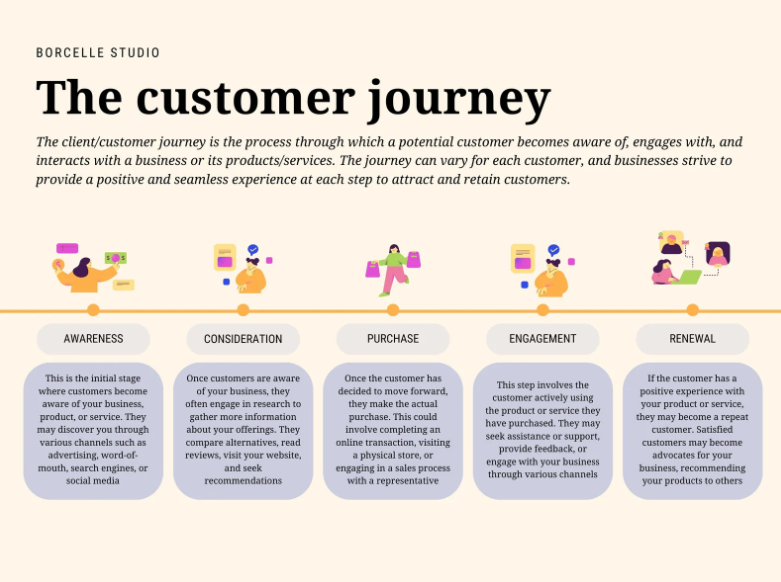
From canva.com
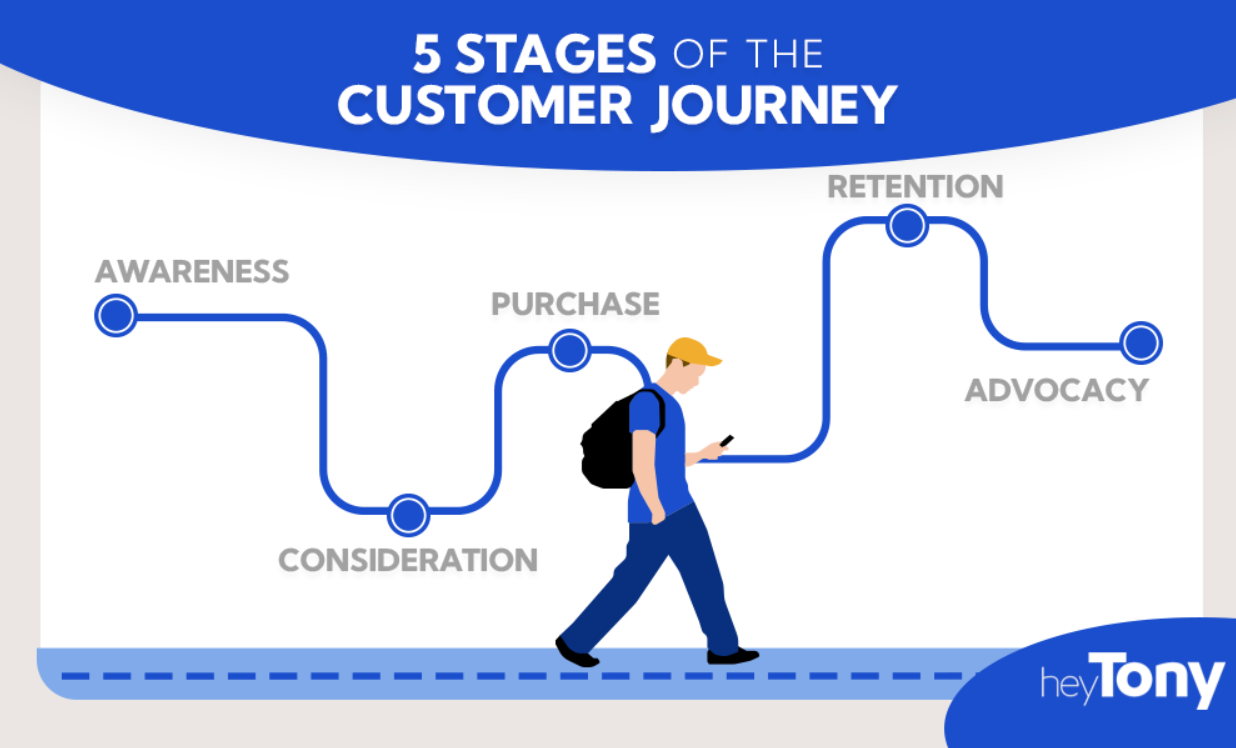
from heytony.ca
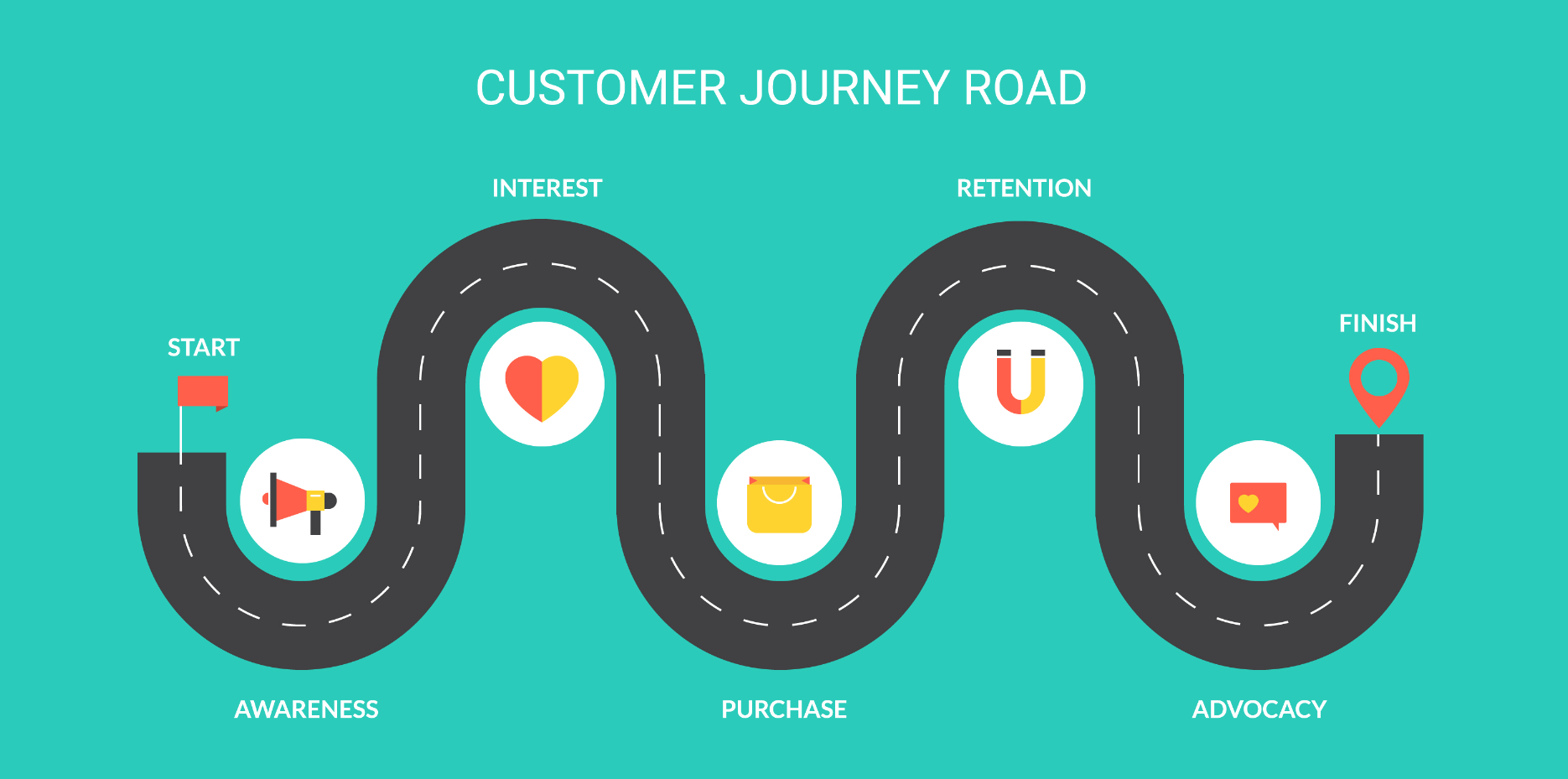
from getthematic.com
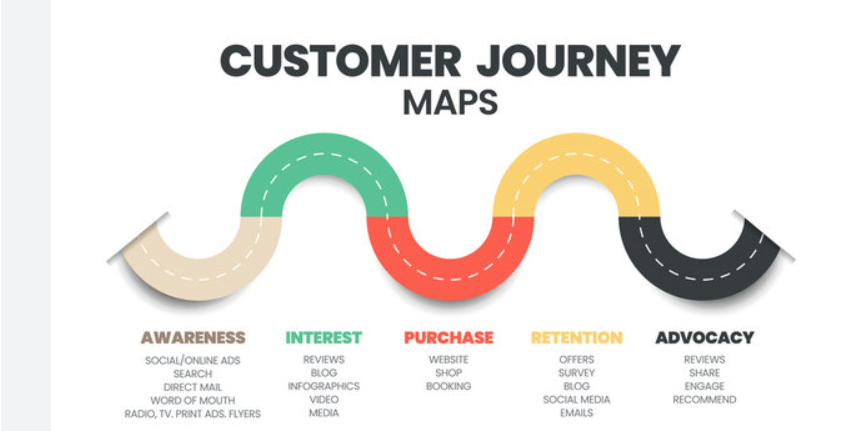
from stock.adobe.com
As you can see, the examples above tend to use the following 5 categories (or some variation of them):
I fully agree with these categories, however, I think A) they can be broken down even more and B) there needs to be an overarching theme of customer support & education that goes along with every single step and category.
For example, if a customer is on the “Interest” level in the examples above, but they have questions about the product or service, what are they going to do? Well, they are going to ask questions and they will look for either a self help option or for a customer support team to help them out. Customer support extends beyond just answering questions though, it can and should be considered a key part of presales, post sales and the entire customer journey.
It’s important to remember that customer support is not only just a phone line or a chat bot or email support. The more ways to contact an actual team member, or even AI bot for preliminary screening these days, the better! Think about social media as well as accessibility options (i.e. only offering technical support over the phone is a big one for telecom companies, but their clients may be deaf (like me) and not do well on the phone so they need more options). Self service is another option to focus on (i.e. a chatbot or help doc centre) or some sort of hybrid with a chatbot that leads to a team member as needed. The more robust these self service options are, the less strain there may be on a support team as customers may get the answers they need, before even reaching the team! It’s also important to not only have the answers out there (such as a help doc centre), but easily findable and digestible. From there and depending on your business model, you may need different specialized support teams such as sales, technical support, billing & taxes, etc.
Of course, the team itself is fundamental to the customer journey. Amongst the hard skills needed for the particular role, they must also show an innate ability to be curious, empathetic, patient and persistent as a few soft skill examples.
Creating a customer journey map itself is no small feat. If you know your customers and your product, then that is a great starting point. However, if you can conduct user research or surveys, then you can create an even more robust and accurate customer journey. An example of this is Spotify. You can read about it here, but they hired a marketing agency to review the customer journey and for this agency, it involved creating a customer persona, conducting customer research and more. In the end, they created a robust customer journey map that highlighted high and low points of the customer’s journey at Spotify. This is a great example that really highlights the effectiveness of a customer journey map.
In my opinion, a customer journey often consists of:
This is a simplified list of the customer journey, but let’s take a moment to break each of these down further and give some more details into how you too can create a memorable customer journey for your customers.
Finding Your Company (Website, Storefront, etc.)
Browsing Your Inventory/services (Website, Store Aisles, etc.)
Reading Your Copy, Branding, Etc.
Contacting You With Any Questions (Support, Sales, etc.)
Purchasing Something
Any Follow Up Questions (Maybe Technical or User Questions if You Are a SasS Company)
Continued Use or Repeat Purchases (Or Even Returns and Exchanges)
Brand Loyalty Grows and Recommendations and Reviews Come Forth
Repeat
To create your own customer journey, I’d recommend utilizing my points above, as well as the images at the beginning of the blog as starting points. Use these to add your own customer and business information. If you can fill it all out, great, but can you improve it still? If you can’t fill it out, what can you do to fill those gaps?
A process map is not quite the same as the customer journey. The customer journey can be described through the images shown earlier, however the image below shows an example of what an internal process may look like.
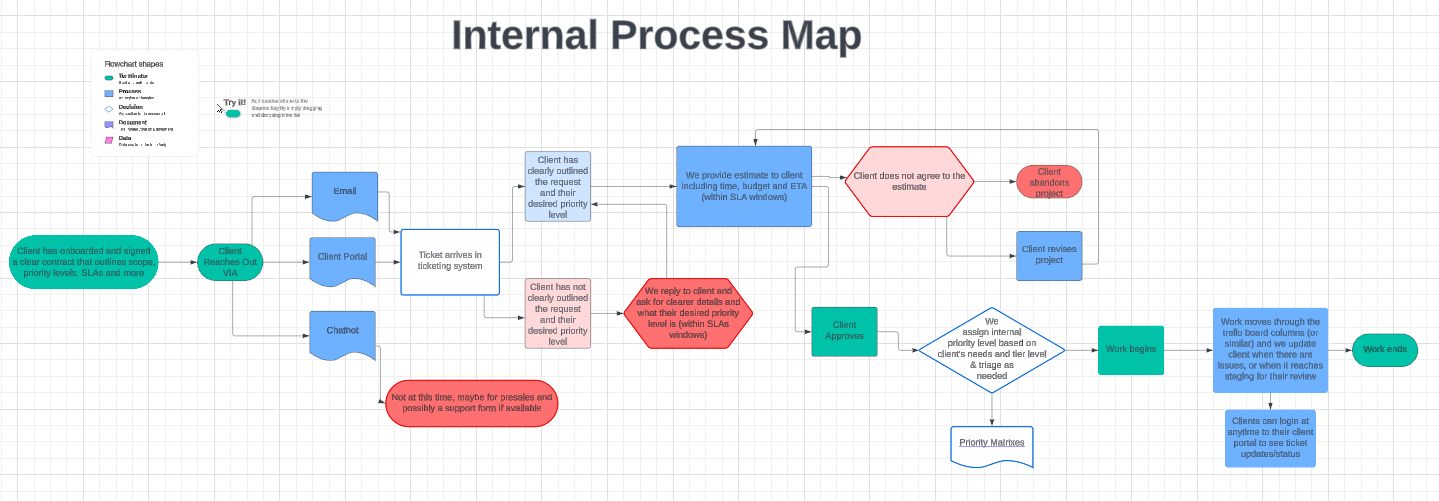
Internal processes are more about what the systems and steps are internally that you take when a customer reaches out or onboards. This can be thought more of, if X happens, then do Y and if W happens, do Z.
That said, they can definitely work hand in hand. If you have your customer journey mapped out, ensure that your internal processes have a step for every step of their journey. This is where the if X happens, then Y follows will come into play. Once you have both the customer journey map and the process map down on paper, take some time to see how they work in conjunction. Do they complement each other? Are there any gaps in between the two?
In addition to internal processes, the customer journey can also be measured in some regard by using certain metrics such as customer satisfaction scores, NPS (Net Promoter Score), churn rates, sale conversion rates and more. The more metrics there are, the more it can help shape the customer journey.
As you can tell, a well thought out and well researched customer journey can result in increased efficiency for your company, improved customer relationships, better brand loyalty, and reduced costs in many ways! When you tie this customer journey map into your internal processes, it helps reduce friction and ensure that your stellar customer support team is ready to support and lead your customers every step on the way.